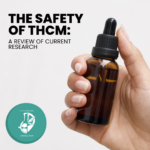With the growing legalization of cannabis, both for medical and recreational purposes, the use of cannabis products has become a major topic of discussion. While most people associate cannabis with its main psychoactive component, THC, the cannabis plant contains many other cannabinoids that have pharmacological effects on the body. These minor cannabinoids, which include CBD, CBG, CBN, and others, have shown great promise in targeting specific medical conditions.
One of the major benefits of medical cannabis is its ability to treat chronic pain, including neuropathic pain. This is a significant benefit for people suffering from conditions such as multiple sclerosis, who often experience debilitating pain. The use of medical cannabis has also been shown to have positive effects on the immune system and can be used to treat a variety of other medical conditions.
However, the use of cannabis products for recreational purposes has raised concerns about drug abuse and the potential for addiction. Synthetic cannabinoids, which are designed to mimic the effects of THC, have been linked to a range of negative health effects and are often more potent than natural cannabinoids.
Despite these concerns, the medical use of cannabis has gained significant traction in recent years, with many countries legalizing medical marijuana. In the United States, over 30 states have legalized medical marijuana, and several other countries, including Canada and Australia, have also legalized its use.
One company that is making major inroads in the medical cannabis industry is Aurora Cannabis. Based in Canada, Aurora Cannabis produces medical cannabis products that are used to treat a range of medical conditions. Their products contain a variety of cannabinoids, including minor cannabinoids, and are designed to be used for medical purposes rather than for recreational use.
While the political will to legalize cannabis for recreational use is growing, it is important to remember that the medical benefits of cannabis are significant and should not be overlooked. By targeting specific medical conditions with minor cannabinoids, cannabis can provide a range of benefits to patients suffering from chronic pain, immune system disorders, and other medical conditions.
It is important to note that the use of medical cannabis should always be done under the supervision of a healthcare professional. Additionally, the effects of cannabis can vary depending on factors such as food consumption and the presence of other cannabinoids. As with any medication, it is important to understand the potential benefits and risks of medical cannabis before use.
Minor cannabinoids are making major inroads in the medical cannabis industry. With the growing legalization of marijuana for medical purposes, there is a significant opportunity to develop cannabis products that target specific medical conditions. By understanding the pharmacological effects of minor cannabinoids, we can unlock the full potential of the cannabis plant and provide a range of benefits to patients suffering from chronic pain, immune system disorders, and other medical conditions.
Minor Cannabinoid Pharmacology and Therapeutics
Cannabinoids, the compounds found in the cannabis plant, have been identified as having potential therapeutic benefits for a range of health conditions. While THC, the main psychoactive component in cannabis, has been the focus of much research, there are many other cannabinoids that may have therapeutic value.
In recent years, research has focused on minor cannabinoids, such as CBD, CBG, and CBN, and their potential therapeutic effects. These compounds have shown promise in helping treat conditions such as epilepsy, cancer, pain, anxiety, and more. Unlike THC, these cannabinoids do not produce the same psychoactive effects and may have fewer side effects.

One country that has legalized cannabis for medicinal use is Canada. In Canada, the production and distribution of cannabis is regulated, and patients with certain health conditions can legally access medical cannabis. The country has also decriminalized the possession of small amounts of cannabis for recreational use.
The therapeutic efficacy of cannabinoids varies depending on the plant strain, cultivation conditions, and distribution method. Different approaches have been taken to produce and distribute cannabis for medicinal use, including the use of specific cultivars of the plant that contain higher levels of particular cannabinoids.
One cannabinoid that has shown particular promise is CBD. CBD has been found to have anti-inflammatory, anti-convulsant, and anti-anxiety effects, and has been used to treat conditions such as Dravet syndrome and other forms of epilepsy. Additionally, CBD has shown potential in treating pain and reducing anxiety in cancer patients.
Despite the potential therapeutic benefits of cannabinoids, research into their use is still in its early stages. One open access article from the Creative Commons Attribution License suggests that more research is needed to fully understand the pharmacology of these compounds and to identify the most effective therapeutic approaches.
As the cannabis industry continues to grow, there is a need for more research into the therapeutic potential of cannabinoids. By understanding the pharmacology of these compounds and identifying the most effective therapeutic approaches, we can unlock the full potential of the cannabis plant to benefit those affected by a range of health conditions.
Cannabigerol (CBG)
Cannabigerol (CBG) is a non-psychoactive cannabinoid found in the cannabis plant. It is considered a minor cannabinoid, as it is present in much lower concentrations than THC or CBD. CBG is produced through biosynthesis from cannabigerolic acid (CBGA), which is a precursor to all other cannabinoids in the plant. CBG has been found to interact with the endocannabinoid system, specifically with CB1 and CB2 receptors, although its pharmacological effects are not yet fully understood. Some studies suggest that CBG may have potential therapeutic benefits, including anti-inflammatory and anti-cancer properties, as well as potential for use in treating glaucoma, anxiety, and other medical conditions.
Cannabidiol (CBD)
Cannabidiol (CBD) is a non-psychoactive cannabinoid found in the cannabis plant. It is one of the most abundant cannabinoids present in the plant, along with tetrahydrocannabinol (THC). CBD is produced through biosynthesis from cannabigerolic acid (CBGA), which is a precursor to all other cannabinoids in the plant. CBD has been found to interact with the endocannabinoid system, specifically with CB1 and CB2 receptors, although its pharmacological effects are not yet fully understood. Some studies suggest that CBD may have potential therapeutic benefits, including anti-inflammatory and anti-anxiety properties, as well as potential for use in treating epilepsy, pain, and other medical conditions. CBD is also commonly used in various wellness and skincare products. Unlike THC, CBD does not produce psychoactive effects or the “high” commonly associated with cannabis use.
Cannabinol (CBN)
Cannabinol (CBN) is a minor cannabinoid found in the cannabis plant, which is produced through the degradation of THC over time due to exposure to oxygen and light. CBN is present in relatively low concentrations in fresh cannabis plants, but its levels increase as the plant ages and its THC content degrades. CBN is not psychoactive like THC, but it may have some mild sedative effects. It has also been found to interact with the endocannabinoid system, specifically with CB1 receptors. CBN has been the subject of some studies exploring its potential therapeutic benefits, including its potential as a sleep aid, appetite stimulant, and anti-inflammatory agent. However, more research is needed to fully understand the pharmacology and potential therapeutic applications of CBN.
Other Minor Cannabinoids
In addition to CBD, CBG, and CBN, there are several other minor cannabinoids found in the cannabis plant that have shown potential therapeutic effects. Here are some other minor cannabinoids found in the cannabis plant, along with their potential therapeutic effects:
- THCV (tetrahydrocannabivarin): potential for treating obesity and diabetes due to its ability to regulate blood sugar levels and reduce appetite.
- CBC (cannabichromene): potential anti-inflammatory and pain-relieving effects.
- Delta-8 THC: chemically similar to THC but with a lower psychoactive potency, may have potential therapeutic effects similar to THC such as pain relief and appetite stimulation.
- THCA (tetrahydrocannabinolic acid): non-psychoactive compound found in raw cannabis that may have anti-inflammatory and neuroprotective effects.
- CBDA (cannabidiolic acid): non-psychoactive compound found in raw cannabis that may have potential anti-inflammatory, antibacterial, and antispasmodic effects.
- CBL (cannabicyclol): non-psychoactive cannabinoid found in aged cannabis that may have potential anti-inflammatory and pain-relieving effects.
While more research is needed to fully understand the pharmacological effects of these minor cannabinoids, they show promise for potential therapeutic use in various medical conditions. It’s important to note that drug abuse and recreational use of cannabis and synthetic cannabinoids can have harmful effects and should be approached with caution. However, the growing understanding of the medical potential of cannabis products is leading to major inroads in the use of medical cannabis for targeted medical purposes.
Cannabis Products
Cannabis companies are constantly developing new products that offer different ways of consuming cannabinoids, and target specific medical conditions. Here are some examples:
- CBD-infused topicals: creams, lotions, and balms infused with CBD are becoming popular for their potential pain-relieving and anti-inflammatory effects.
- THC/CBD tinctures: these liquid extracts can be added to food or taken sublingually for a more discreet and precise method of consuming cannabinoids.
- Cannabis capsules: capsules containing either THC or CBD offer a convenient and easy-to-dose method of consumption.
- Cannabis concentrates: high-potency extracts such as shatter, wax, and live resin offer a more potent and efficient way of consuming cannabinoids.
- Cannabis edibles: food products infused with cannabinoids such as THC and CBD offer a discreet and convenient way to consume cannabis. The effects vary depending on the dosage and the individual’s tolerance.
- Cannabis-infused beverages: drinks infused with THC and CBD are becoming increasingly popular and offer a more social and discrete way to consume cannabis.
- Cannabis strains designed for specific medical conditions: cannabis cultivators are developing strains that are tailored to target specific medical conditions such as chronic pain, anxiety, and cancer.

These products are being developed in different countries, with varying degrees of legalization and regulation. Cannabis companies are conducting research on the efficacy of these products and collecting data on their effects. Different approaches are being taken in different countries, with some allowing only medical use of cannabis, while others have decriminalized recreational use. As the industry continues to grow and expand, more products and therapeutics are being identified, and distribution and legal regulation are becoming more standardized.





